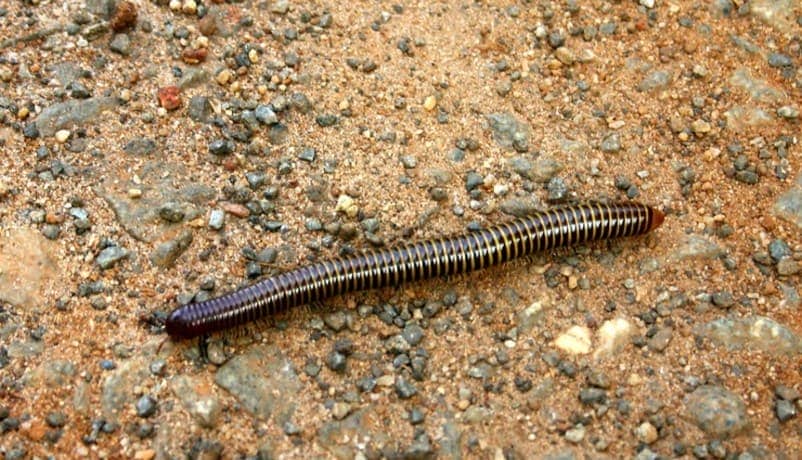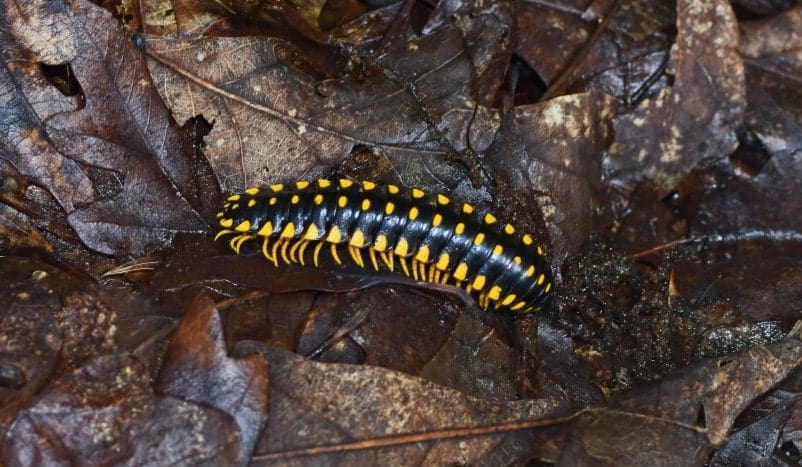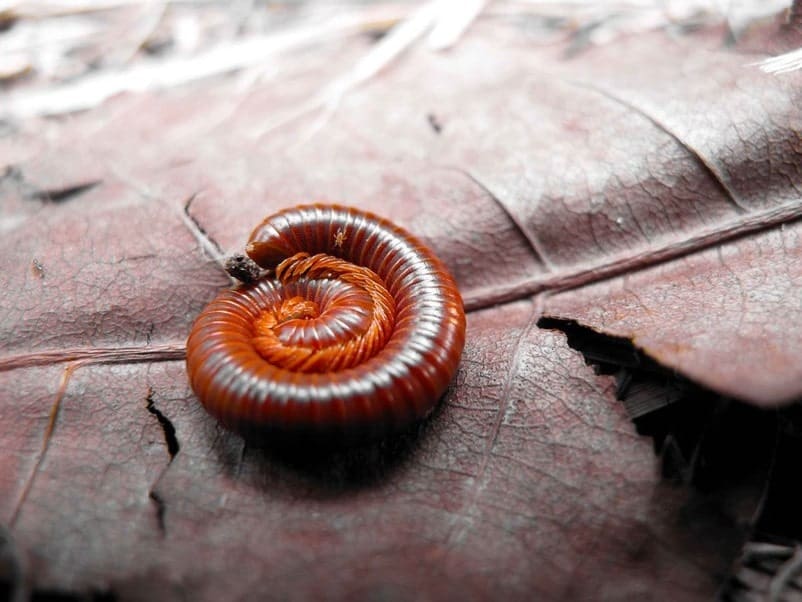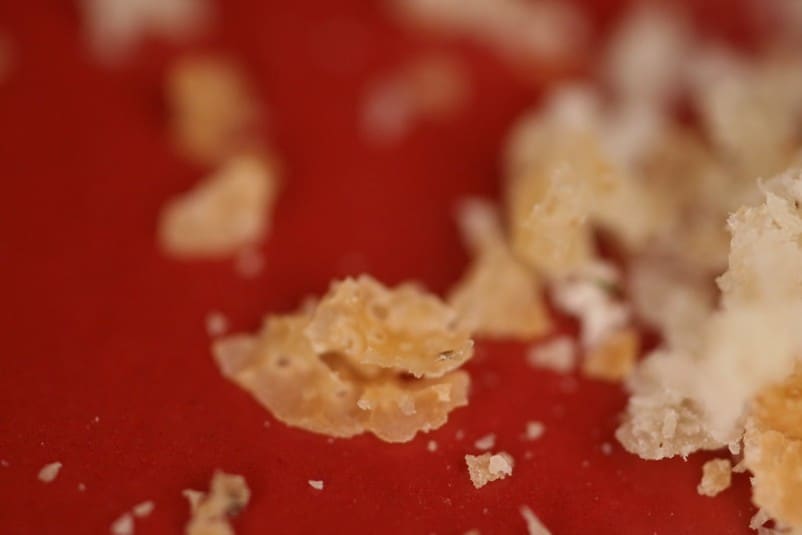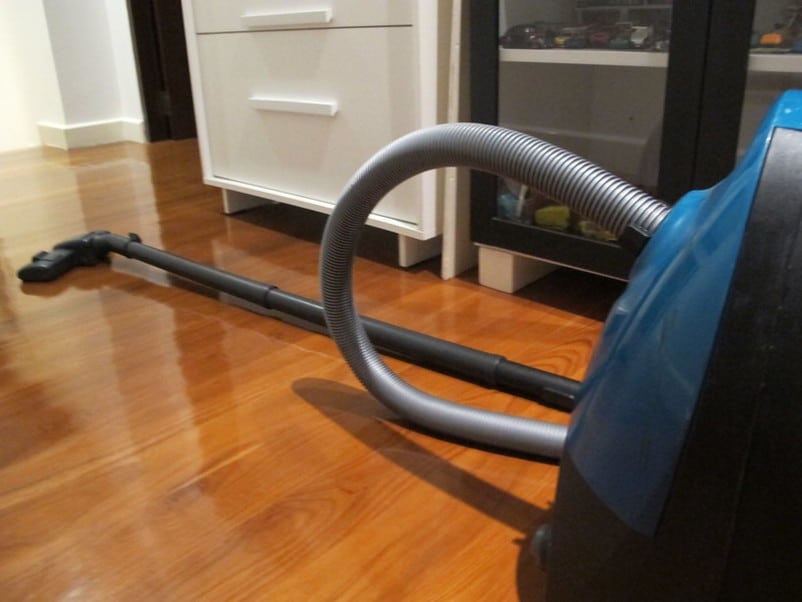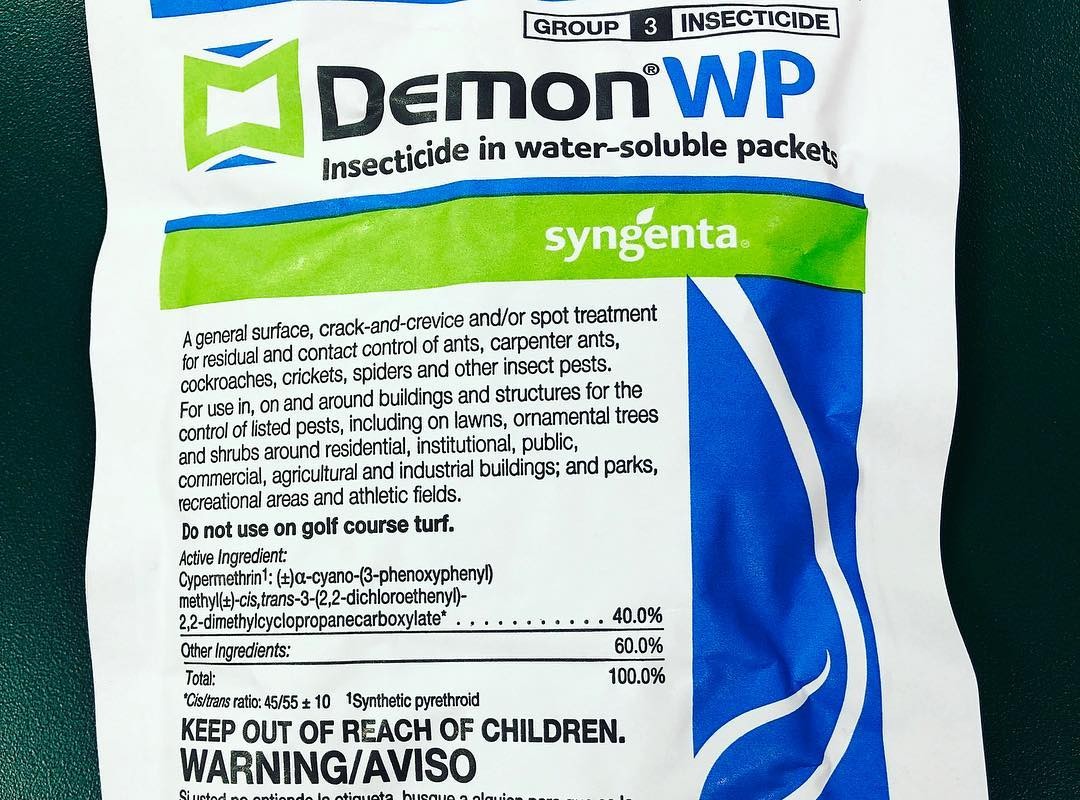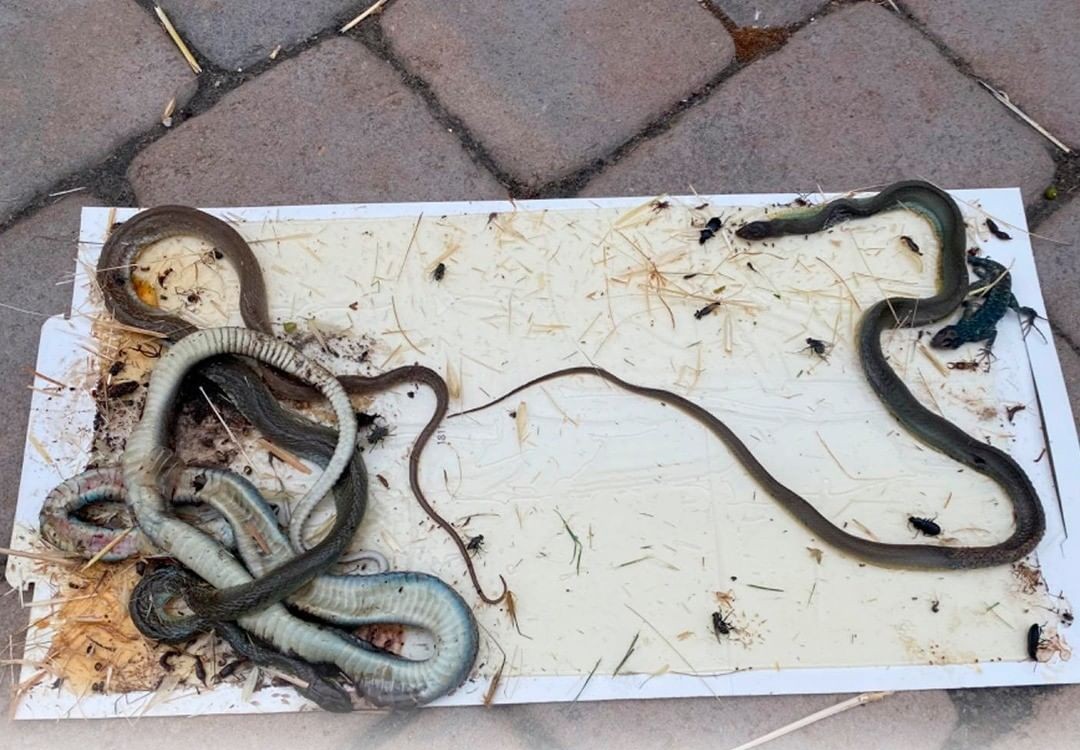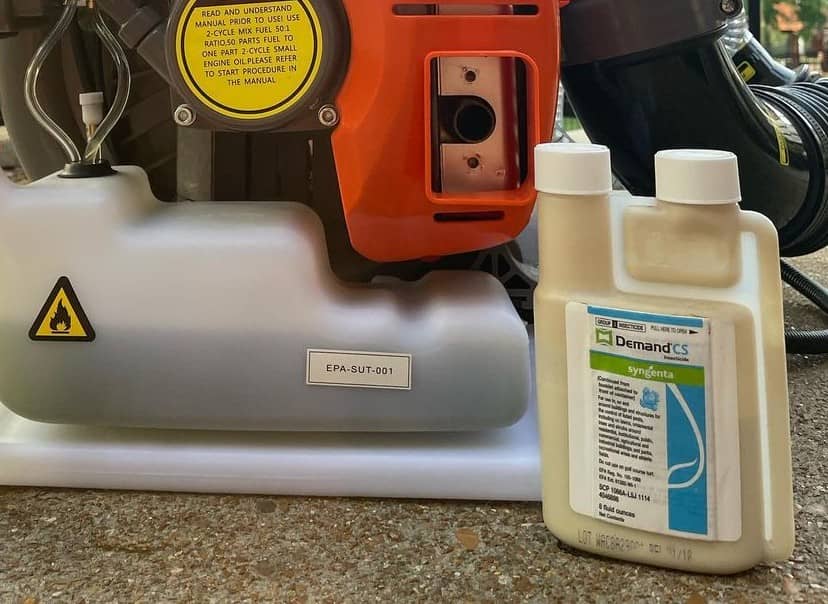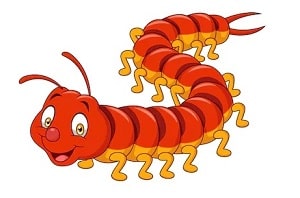Millipedes are not the most attractive neighbors. Their appearance can terrify even the bravest person. While some species are beneficial on the farm for eating small pests, others harm plants and can even be dangerous to humans, especially those prone to allergic reactions.
In this article, I will describe the peculiarities of their habitat and behavior and tell you how to get rid of millipedes using the most effective remedies. It is crucial not only to kill adult species but also to find why they got at your site to prevent their reappearance.
What Are Millipedes?
Millipedes are a vast group of arthropods that include over 12000 species. Only in the United States, there are about 1000 of them. Of course, they all have differences in appearance, behavior, and habitat. But in general, they are very easy to distinguish from other groups of insects.
Visual identification
So, what does millipede look like? All millipedes have cylindrical or flat, elongated bodies, divided into more than 20 segments with two pairs of thin legs on each. Their length varies by species, from 0.08 to 15 inches. The number of legs is also different, and there is not a single known species with a thousand legs (“millipede” is “a thousand feet” in Latin).
On average, most species have from 30 to 400 of them. The color can vary as well: from pale brown to black. Some of them have a soft exoskeleton, while others, on the contrary, are well protected by calcified shells.
Common species
Considering that millipedes are one of the oldest land creatures, there are many species and families in this group. Among the most common in the US, there are, for example, dark gray with red stripes North American millipede (or iron worm), Apheloria virginiensis in black-orange-yellow color, black with small white legs White legged Snake Millipede, and brown with red stripes Striped Millipede.
Lifecycle
A female millipede can lay up to hundreds of eggs after mating. After a few weeks, so-called nymphs hatch from them, which, after a while, molt and become to look similar to adults.
Since millipedes need to regularly replenish water reserves in their bodies for a full-fledged existence, they build their nests in places with high humidity. With enough water and food and no predators, these creatures can live up to 10 years.
Millipedes vs. centipedes
Many people think that millipedes and centipedes are similar, although you can easily distinguish them if you take a closer look. If the former has two pairs of legs attached to the lower part of each body segment, then the latter has only one pair, which is located on the sides.
Most millipedes are herbivores and move quite slowly, while centipedes are predators and run very fast. It is centipedes that can severely bite a person and cause serious harm to health.
Where Do Millipedes Come from and What Attracts Them?
These arthropods appear on your site because it has enough food and moist soil. Millipedes can also live in damp fallen leaves, pine needles, and tree trunks. They feed mainly on decaying plants, but some species also love fresh plants.
If the living conditions outdoors become uncomfortable for them (high temperature and drought, or, conversely, heavy rains), then they can settle under your veranda or patio and easily move indoors. Most often, they live in basements, garages, and under the furniture. They do not leave visible signs of their presence (e.g., large nests), so it is not easy to identify millipede infestation.
Millipede Damage
As already mentioned, millipedes are significantly less dangerous than centipedes. However, even these creatures can harm humans and pets. All species are known to have a chemical defense mechanism: when disturbed or in danger, they secrete the liquid that irritates eyes and skin. Fortunately, the species that live in North America are not poisonous.
Also, since some of these creatures feed on plant foods, they can become a serious threat to agriculture if there are too many of them on your site. In addition to the green parts of plants and their roots, they can consume leaf litter, vegetables, and fruits for food. The damage they inflict means death for plants since they actually gnaw through their main artery — the place where nutrients from roots enter shoots.
Step-by-Step Guide: Everything You Need to Know About Millipede Removal
Determining if there are millipedes on your yard or house is not easy. Therefore, all you have to do is observe whether an adult appears on the soil surface or, in the worst case, on your walls. If nevertheless, these pests are bred on your site, you need to get rid of them on time, before they multiply and begin to cause serious inconvenience.
Step 1: Eliminate food and water sources
One of the most effective natural ways to get rid of millipedes is to eliminate the moisture on your territory. If the soil is too damp, drain it, install gutters, and clean the drainage system. Repair any leaking pipes and taps and adjust the irrigation system so that excess water does not accumulate anywhere.
These pests like to hide under large stones, so they may have to be removed from the site as well. If you have air conditioners, try to keep dripping water as far away from buildings as possible.
You should also regularly pick fallen leaves, remove grass cuttings and old wood (any plant material) so that they do not accumulate moisture and do not rot. It will deprive the millipedes of the food source. With these simple measures, you will make your site unattractive to them. Without food and water, they will not live for more than a couple of weeks.
Step 2: Seal your house
To prevent turfgrass millipedes from crawling into the house, inspect the walls and foundation. Seal all cracks if necessary, and check that doors and windows are tightly closed.
When doing this, make sure that the basement and garage are well ventilated. Install screens for each vent if needed. If there is high humidity in the premises, use dehumidifiers to eliminate it (the humidity level should not exceed 50%).
Step 3: Get rid of millipedes
If all the measures described are taken, and the amount of millipedes is not decreasing, use insecticides, traps, and other tools to kill pests.
Insecticides
The best way to kill millipedes in terms of speed and efficiency is to use various insecticides containing
Pyrethrin, Propoxur, Carbaryl, Cyfluthrin, or Bendiocarb. You can spray it directly onto the insect that has crawled out of its shelter. It is not recommended to take a dead creature with your bare hands, so do not forget to wear rubber gloves.
You can also process rooms with sprays, dust, and other liquids. I recommend applying any product to all places where millipedes can potentially crawl, not just where you saw them: entrance door sills, vents, walls around the perimeter of the foundation, and patios. Some liquids can be used to treat lawns or flower beds. If you have a wet basement or garage, you can also apply insecticide to the interior walls.
Remember that many chemicals are broad-ranging and can kill other beneficial insects, so use them carefully. Also, read the packaging closely if you have pets or children. Toxic agents should not be sprayed on plants that you plan to eat later.
Traps
There are many different traps for pests on the market now. In the case of millipedes, they can be really useful: a creature will get stuck inside and die pretty quickly without food and mostly water. They have a fairly simple design and operating principle. Arthropods are easily attracted by the smell of decaying plants and light. Once trapped, they cannot get out of there due to the smooth walls or the glue on their surface.
Using traps is a safer way to get rid of millipedes outside and inside your house. You don’t put other animals in danger of being poisoned. If you have a lot of these creatures in your area, place several traps in the most vulnerable points of entry.
If you wish, you can make such a device yourself. To do this, you will need a bait (a piece of fruit, for example), a plastic bottle, and a vinyl tube. Put the bait on the bottle bottom, and insert the tube into the neck so that it does not touch walls. Put the device horizontally so millipedes can crawl down the pipe attracted to the fruit. Place the captured creatures in a plastic bag, seal it securely, and throw it into your outdoor trash can.
Vacuum cleaner
If there are really many millipedes in your house and outdoors, you can quickly remove them with a vacuum cleaner. These creatures are very slow, and in case of danger, they curl up into a tight ball and just stay still, so in this way, getting rid of them will not be difficult.
Just do not forget to clean a container of them immediately. And do not throw a bag with the insects into an indoor trash bin, as there is always a chance that they will get out.
Other millipede control ways
As an additional measure of protection against these creatures, some people use peppermint and tea tree essential oils. They are recommended to be applied in the same way as other pest control products. This method’s disadvantage is that the oils quickly erode, wash off with water, and require frequent reapplication.
The use of diatomaceous earth as a plant fertilizer has proven its effectiveness. This material looks like a powder consisting of small crystals that can seriously damage even the densest exoskeleton. DE is used in agriculture as a soil absorbent and insecticide. It is entirely natural and safe for use in residential areas.
Alternatively, you can use boric acid. It is a cheaper and more affordable repellent, but it may not be safe for pets. And to drain the soil, you can use wood ash.
Top 4 Best Millipede Treatments: Reviews of the Most Effective Products
Now that you know how to get rid of millipedes in house and yard, I will share with you my reviews of products that I consider to be the best for this purpose.
1. Best Millipede Killer Dust: Demon WP Insecticide
Specifications:
- Active Ingredient: Cypermethrin 40%
- Item Form: Granule
- Item Weight: 1.44 ounces
- Package Dimensions LxWxH: 6 x 3 x 0.25 inches
- Target Species:Ants, Aphidsc, Assassin Bugs, Boxelder Bugs, California Oakworm, Centipedes, Chiggers, Chinch Bugs, Cockroaches, Crickets, Earwigs, Elm Leaf Beetlec, Firebrats, Fleas, Flies, Millipedes, Mites, Mosquitoes, Pillbugs, Silverfish, Sowbugs, Termitese, Bees, Carpenter Ants, Carpenter Bees, Fire Ants,¤Ô¤¸¤Á¤corpions, Sod Webworms, Spiders, Ticks, Wasps
Demon WP Insecticide is suitable for both indoor and outdoor use. The tool is a powder that dissolves easily in water. One pack is designed for one gallon of water; this should be enough to process approximately 2500 square feet.
The manufacturer guarantees that due to its high activity, the insecticide quickly destroys insects, does not fade, and stays effective for 90 days. Since it contains Cypermethrin, which is moderately toxic to humans, I recommend using it gently indoors.
| Pros: | Cons: |
|
|
2. Best Millipedes Trap: Catchmaster 72MAX Pest Trap
Specifications:
- Number of Pieces: 4
- Item Form: Pest Trap
- Item Weight: 11.2 Ounces
- Package Dimensions LxWxH: 8.5 x 5.25 x 0.05 inches
- Target Species: Mice, Snakes, Crickets, Bats, Fleas, Ticks, Mites, Lice, Roaches, Brown Recluse Spiders and other potentially disease transmitting insects
If you are looking for a versatile trap that will help you get rid of not only millipedes but many other pests (even baby snakes and mice), then the Catchmaster 72MAX Pest Trap is an excellent choice. Just place one or several of them in places where arthropods congregate or enter your spot.
The product folds into a house shape, but you can open it completely if you wish to create a large adhesive area. There is a peanut butter scent glue that is used as a bait.
| Pros: | Cons: |
|
|
3. Best Indoor Millipede Spray: Ortho Home Defense Insect Killer
Specifications:
- Active Ingredients: Bifenthrin 0.05%, Zeta-Cypermethrin 0.0125%
- Item Form: Spray
- Item Weight: 3.52 pounds
- Package Dimensions LxWxH: 4.6 x 10.8 x 5 inches
- Target Species: Adelgids, Ants, Aphids, Bees, Beetles, Borers, Boxelder Bugs, Caterpillars, Centipedes, Chinch Bugs, Cockroaches, Fleas, Flies, Mites, Mosquitoes, Ticks, Termites, Wasps, Whiteflies, Yellowjackets, etc.
Ortho Home Defense Insect Killer not only kills household insects but also creates protective barriers that keep millipedes out of house throughout the year. It is completely ready to use; you just need to spray it around the perimeter of rooms, outside the house, and on the patio.
Conveniently, the package comes with two bottles of 24 ounces each. Since this spray is odorless, it is safe for indoor use. True, it is suitable for spraying only on nonporous surfaces, as it is easily absorbed.
| Pros: | Cons: |
|
|
4. Professional Insecticide: Syngenta Demand CS Insecticide
Specifications:
- Active Ingredient: lambda-Cyhalothrin 9.7%
- Liquid Volume: 8 fl. oz.
- Item Weight: 10 Ounces
- Package Dimensions LxWxH: 1.8 x 3.65 x 6.05 inches
- Target Species: Ants, Aphids, Bed Bugs, Beetles, Boxelder Bugs, Carpenter Bees, Carpet beetles, Centipedes, Chiggers, Chinch Bugs, Clover Mites, Cluster flies, Cockroaches, Crickets, Earwigs, Fleas, Flies, Grasshopper, Grubs, Gypsy Moth Larvae, Japanese Beetles, Midges, Millipedes, Mites, Mole Cricket, Mosquitoes, Scorpions, Silverfish, Spiders, Termites, Thrips, Ticks, Wasps, Whiteflies and others
For those who prefer to rely on professional tools, I can recommend Syngenta Demand CS Insecticide. You can use it for both living rooms and lawns, flower beds, and ornamental plants. The product is sold in 8-ounce bottles. The area that can be covered with this volume depends on the concentration.
The manufacturer recommends using 0.2 to 0.8 fluid ounces per gallon of water. The sprayed insecticide remains active for three months, saving you the hassle of finding the answer to how to keep millipedes away. However, I recommend reapplying it if it rains heavily in your area.
| Pros: | Cons: |
|
|
Millipede Extermination FAQs
If millipedes remain strange and incomprehensible creatures for you, check out my answers to the most frequently asked questions about them.
Do millipedes lay eggs?
Yes, like all arthropods, these creatures reproduce by laying eggs. Depending on the specific species, a female can lay from 10 to 300 eggs at a time. In most cases, they do not build nests but lay their eggs directly in damp soil.
How long do millipedes live?
Their lifespan varies from a year to 10 years. Such a long existence is possible in the presence of water, a food source, and the absence of natural predators. By the way, it is for their long lifespan that some insect lovers have millipedes as pets.
How big do millipedes get?
It also depends on the specific species. On average, most representatives are one to two inches long. But there are both very tiny creatures (about 0.08 inches) and gigantic ones (about 15 inches). Fortunately, such huge millipedes have not been seen in North America.
Where do millipedes usually hide?
These creatures need water, so they are looking for the most humid habitat. You can find them in wet soil, under rocks and trunks of fallen trees, fallen leaves, and pine needles. If it gets too dry and hot outside, they move into houses and live in basements and garages.
How to Stop Millipedes Once and for All
I`m never tired of repeating that the key to success is an integrated approach in the fight against household insects. In general, millipedes are harmless and even useful creatures, but they can cause serious inconvenience if not controlled.
Therefore, along with draining the soil around your house and getting rid of moisture in the rooms, I recommend using professional pest control agents: sprays, dust, liquids, and traps.
Have you encountered a problem with millipedes? What method of dealing with them has proven effective? If you still have any questions, feel free to ask me in the comments below.
References:
- The Oldest Land Animals: Silurian Millipedes from Scotland (Academia):
https://www.academia.edu/2834181/THE_OLDEST_LAND_ANIMALS_SILURIAN_MILLIPEDES_FROM_SCOTLAND - How are millipedes and centipedes alike and how do they differ? (Library of Congress):
https://www.loc.gov/everyday-mysteries/zoology/item/how-are-millipedes-and-centipedes-alike-and-how-do-they-differ/ - Chemical Defence in a Millipede: Evaluation and Characterization of Antimicrobial Activity of the Defensive Secretion from Pachyiulus hungaricus (National Library of Medicine National Institutes of Health):
https://www.ncbi.nlm.nih.gov/pmc/articles/PMC5132186/ - Diatomaceous Earth (National Pesticide Information Center):
http://npic.orst.edu/factsheets/degen.html - Cypermethrin (National Pesticide Information Center):
http://npic.orst.edu/factsheets/cypermethrin.pdf
Contents
Why You Should Trust Pest Control Hacks?
We know that pests are nasty neighbors, and it can take months to eliminate them without the right approach. Our experts use their own experience to compile articles and guides that are introductory and informative. Our authors’ opinions are independent and based on the results of practical testing of pest control tools. We do not notify manufacturers of testing of their products and do not receive payment from them for posting their items. Also, our texts are never submitted to company representatives for proofreading before placement. On the site, you will find exclusively objective ratings and reviews.


